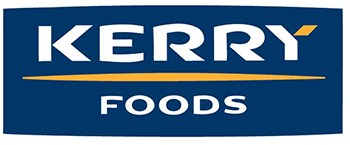
You’ve invested a lot of time and effort into the hiring process. You’ve screened candidates and narrowed down the pool. You’ve selected the best person for the job and extended an offer. Finally, she’s accepted and now you have a new hire getting ready for her first day on the job.
This is a crucial time in your new hire’s experience. After all you’ve invested, you can’t afford for her—or any new hires for that matter—to feel disengaged or to drop off within the first six months (like 31 percent of employees do). You need to channel her enthusiasm and set her up for success.
That’s what the onboarding process is all about.
Why is Employee Onboarding Important?
According to the APA Handbook Of Industrial And Organizational Psychology, the onboarding process helps employees gain “the necessary knowledge, skills, and behaviors to become effective organizational members and insiders.” It gives them what they need to function and, more importantly, feel like full-fledged members of your organization.
Your efforts to equip new hires with these skills, tell them what they need to know, and teach them how to act have a huge impact on their time with your organization. From one of our own recent onboarding surveys, we found:
- Employees who rated their onboarding experience as “highly effective” were 18 times more likely to feel highly committed to their organization
- 91 percent of employees who went through effective onboarding felt strong connectedness at work
- 89 percent of employees who went through effective onboarding felt strongly integrated into their company culture
- 49 percent of employees who went through effective onboarding reported contributing to their team within the first week
When your organization provides an excellent employee onboarding experience, new hires can jump into their roles more quickly and channel their excitement and enthusiasm into doing their best work. They can also forge personal connections and learn the culture of your organization and their team right away, instead of feeling like an outsider.
There are so many opportunities to win with onboarding—so how do you truly make the most of those first few days, weeks, and months?
Onboarding Best Practices
The specifics of onboarding programs will look different at every organization since employees will need to learn skills and knowledge that are unique to their organizations. But there are a number of core principles and onboarding best practices that apply across the board. We’ll dive into a few of the most common onboarding steps here (you can read even more in our New Definitive Guide to Onboarding).
Before the First Day
What some organizations don’t realize is that onboarding can begin before new hires ever set foot inside the office—also called pre-boarding. After you have extended offers and the candidates have accepted, there is a window of downtime before their first day.
Engaging new hires during this period is crucial. It’s during this time that they may receive other competitive offers, and if they aren’t fully committed to your organization, they may change their minds and go somewhere else. On the other hand, if you maintain contact, answer questions, send documents and forms, and make team introductions, you will help incoming employees solidify their decision to join your organization and feel excited to get started.
Here are a number of ways to keep new hires engaged during the pre-boarding phase:
- Maintain prompt and consistent communication
- Use onboarding software to process new-hire paperwork ahead of time
- Introduce new hires to their future team members and managers, and encourage your current team members to reach out
- Encourage new hires to ask questions
- Send a get-to-know-you survey to share with the team
- Set up workspace early
Within the First Month
If you’ve executed the pre-boarding phase well, your new employees will start on the first day eager to get up-to-speed and start contributing. Imagine a marble at the top of a ramp; the marble has the potential to start rolling right away—all you have to do is set the track and remove the blocks. Likewise, new hires will have the enthusiasm and energy to hit the ground running; you simply need to give them the tools and direction to start.
Here are a handful of ways you can get your newest employees off on the right foot:
- Provide thorough training on job duties, company policies, and culture
- Introduce new hire to team members, managers, and other coworkers outside the team (this is especially important for remote workers)
- Designate a mentor to whom a new hire can take their questions
- Set clear expectations for day-to-day responsibilities and performance metrics
- Educate new hires on what benefits are available and how these benefits might be used
During the First Six Months
After the new hire has learned everyone’s names, figured out how to use the ice machine in the break room, mastered their day-to-day tasks, and set up framed photos on their desk, it might seem like the onboarding process is finished. In other words, once a new employee stops looking like a new employee, managers, coworkers, and HR professionals alike may stop worrying about how that person is adapting to the organization. On the surface, everything might seem just fine.
However, after the honeymoon phase of starting a new job, new employees could start running into snags. These snags come in the form of unclear expectations, lack of direction, personality conflicts, feelings of isolation, and more. If your organization allows these issues to fester, then employees will start looking for the exit.
Instead, it’s important to continue the onboarding process throughout the first six months (and even the first year) to set new hires up for long-term engagement. Here are some ideas for how to do that:
- Ensure each manager schedules regular check-ins
- Ask for and provide consistent feedback
- Work with new hires to set goals and define expectations
- Follow up on and schedule any remaining trainings
- Check on benefits enrollment and usage
- Encourage team-building with both formal and informal activities
Conclusion
Onboarding can mean the difference between posting another job ad and keeping a happy, engaged employee with your company for years to come. And the process covers much more time and many more activities than some organizations realize. Understanding what effective onboarding really means (and then practicing it) can be a real competitive advantage for your organization—and save a lot of headaches for all your new hires.
REF: Taken from Glass Door for employers,














